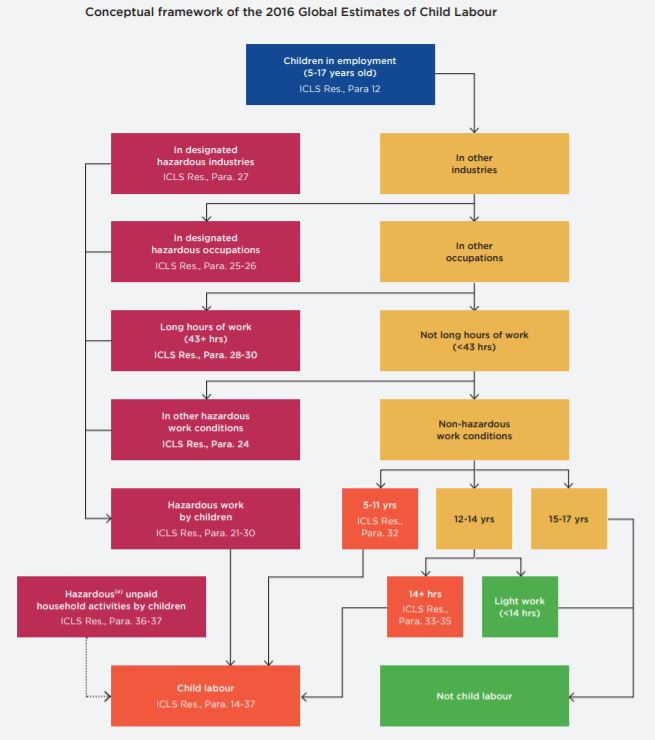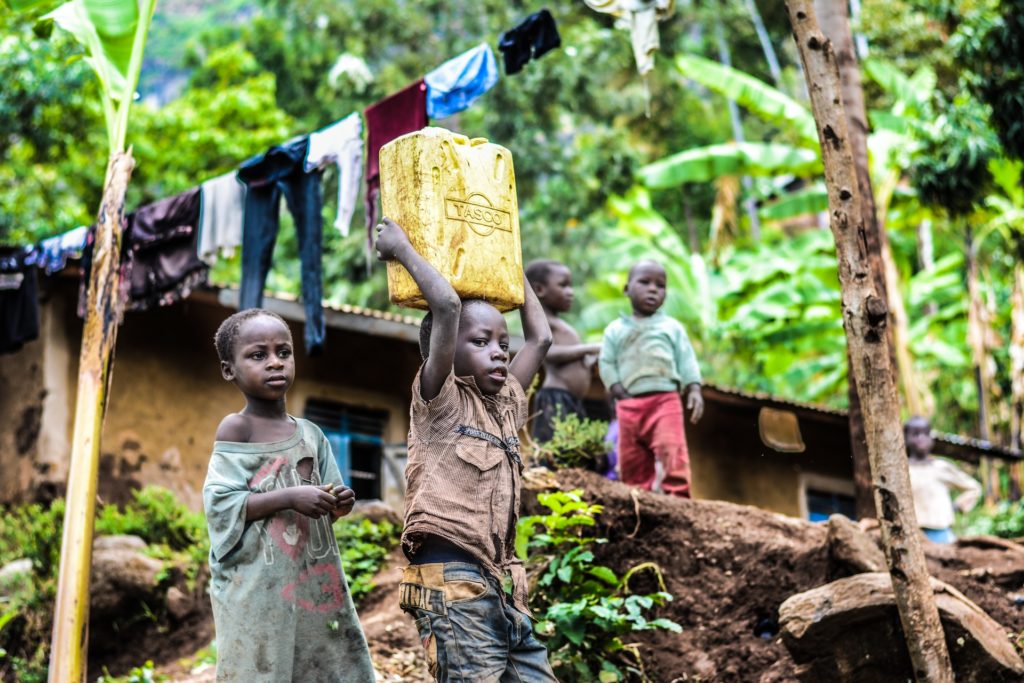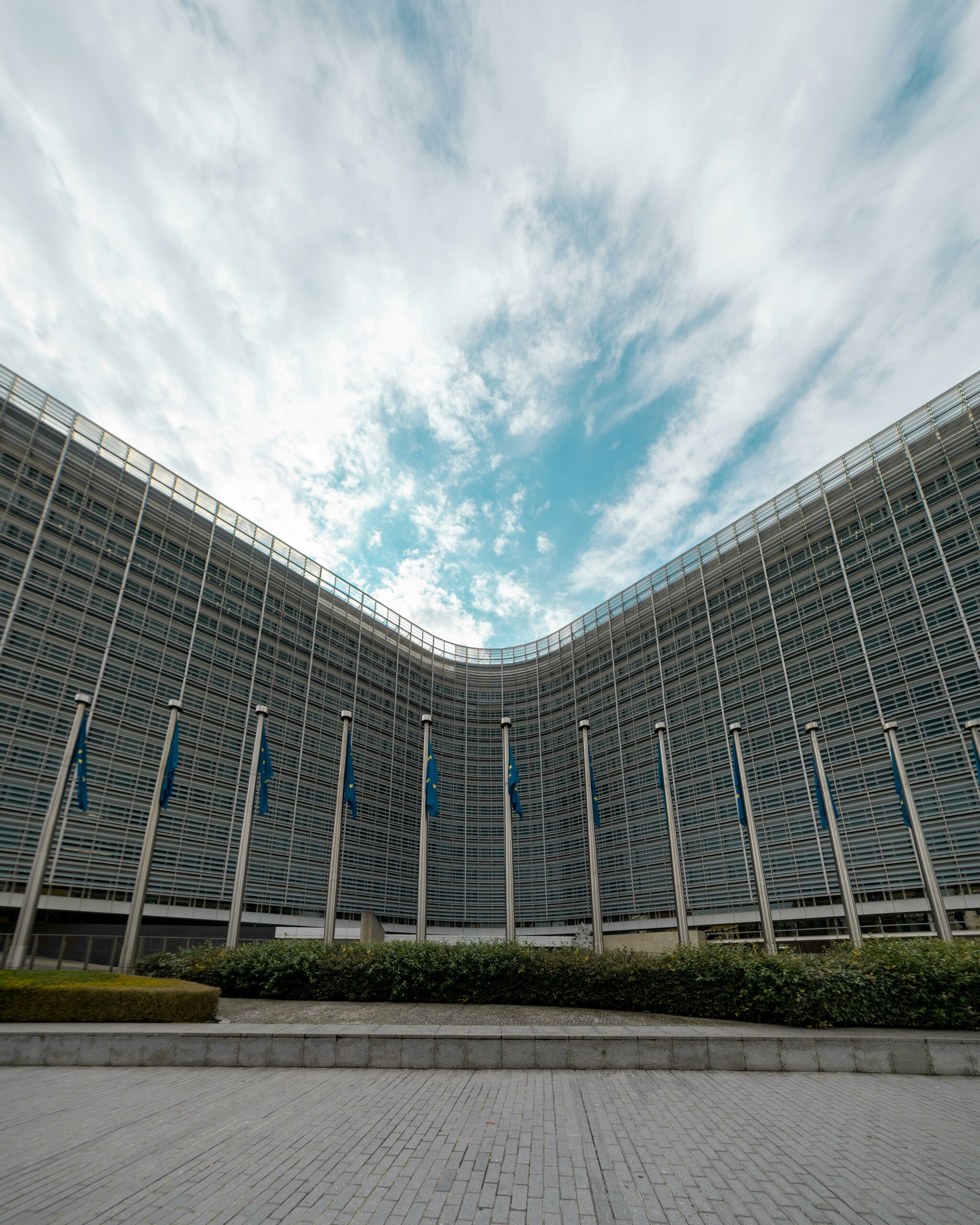Customs, investors, lawyers are increasing pressure on companies and their supply chains to eliminate child labor. The year 2021 was proclaimed “International Year for the Elimination of Child Labor” in July 2019 by the United Nations General Assembly. How to move forward? Interesting discussions were held at the recent Paris Peace Forum. We have 5 concrete suggestions from our experience.
Context: Pressure is on the Rise, and Results are Insufficient
The pressure is increasing on companies. 2 recent examples:
- Ivorian cocoa threatened with an American embargo. In late October, a US team from Customs visited Côte d’Ivoire to investigate child labor in the cocoa sector. According to a study by the US Department of Labor, just over two million children work on cocoa plantations in Côte d’Ivoire and Ghana. The vast majority live on small family farms and perform dangerous tasks. But statistical data are lacking to assess the number of children who are victims of the most serious situations, such as modern slavery or trafficking from neighbouring countries. Another such mission could take place by the end of 2019. Last July, two US senators asked the Department of Homeland Security to investigate and, if necessary, ban the entry into the United States of Ivorian cocoa beans
- The tobacco multinational BAT is facing the impending century’s trial, accused by various organizations of benefiting from child labor (and forced labor) by the hundreds in Malawi for years without having taken the necessary measures to ensure its effective eradication. The amounts of compensation involved amount to hundreds of millions of dollars.
Concretely, these two current examples allow us to draw 3 conclusions:
- Despite decades of investment in social audits, awareness-raising on these issues and programmes funded by millions, child labor remains a reality in the daily lives of millions of children in 2019. This is a fact that should be recalled as necessary.
- Secondly, while agricultural supply chains remain mainly exposed (probably 70% of the cases observed according to the studies), all sectors can be directly or indirectly exposed. Construction, cleaning, small clothing…
- Finally, it is worth taking advantage of the two examples above to translate an ethical issue (“child labor is not a good thing”) into a financial materiality. Losing millions in lawsuits is expensive. Customs that close their doors on large Western markets are also expensive.
Child Labor in Everyday Life
The blockbuster film “Lion“, based on a true story in India, provides a cultural, economic and social insight into the determinants of child labor. In India, little Saroo, 5 years old, helps his brother of about 10 years at work, to bring an additional salary to the mother, a worker on an open pit, who is raising 3 children alone. While this film does not directly deal with this particular issue, it offers an interesting window to understand what child labor can look like on a daily basis, in its different dimensions:
- First of all, there is the cultural dimension. In this very poor Indian context where the mother is raising her 3 children alone in a poorly paid work activity, it is quite normal for her 2 sons to help the mother at home.
- Economic dimension. We do have no social assistance, which does not exist in this kind of family anyway. The additional salary of the 2 sons (especially the eldest son) is essential for the day-to-day survival of the household. So work is necessarily privileged over any other activity, such as going to school
- Social dimension. Esther Duflo and the work carried out in India by the Abdul Latif Jameel Chair for Development and Poverty Alleviation in the Economics Department of MIT shows very clearly different determination and constraints explaining the avoidance of the school system and child labor in India in particular. A simple example: India’s public school requires everyone to buy a relatively expensive uniform – a fortune for Saroo’s family. Without a uniform, it is impossible to attend school. For the most disadvantaged social classes, the reasoning logically pushes to help the brother at work so as to bring a short-term income rather than invest in a school uniform and give a chance to create much longer-term income, since this forward-thinking reasoning does not operate in a daily economy of survival
Thus, through these different cultural, economic and social dimensions, we can see different dynamics that can make child labor a form of normalcy.
Any Company is Potentially Implicated
“ Virtually any company can face the issue of child labor through its subcontractors, supply chains, or employee practices – whether in the US, in Europe, or elsewhere”
Far beyond the agricultural sector, any company can be directly or indirectly implicated. Here are the main reasons:
1. Unclear and Insufficient Law Enforcement
Already the law remains unclear and is not homogenously enforced by companies. The signature of ILO conventions by governments and their adherence by companies is not enough to address the issue of child labor. The proposed directives remain vague and directional and do not impose precise guidelines to be followed at company level. Thresholds of 12, 14 or 16 years are set according to the type of industry, the hardship / dangerousness of the activities, the number of hours (14h and 43h levels), and incites access to education. In practice, and despite the rise in political initiatives and social audits developing the increasing professionalism of business actors, the figures are falling, but not enough over the last 20 years. In different sensitive areas, it is very easy to find companies that have no idea of the ILO guidelines…

2. Companies Underestimating Their Actual and Daily Exposure to Child Labor Risks
70% of the problems are found in agriculture. It is therefore easy for companies that consider themselves to be involved in activities that are further away from the farming community to feel less implicated. How many times, for example, have we talked to the electronics, industrial or pharmaceutical industries and heard that the high technology dimension requires qualified personnel and reduces the risk of child labor as such? This is partly true, but neglects several blind spots, such as in the contractors’ activities, in supply chains or in employees’ practices, for example.
- Contractors’ activities. Construction, cleaning, maintenance, for example, can pose real risks. However, there are often insufficient controls in place for staff who come to repair a wall, do gardening or housework in offices and industrial sites. In Europe and within the European Union, the development of migrant workers (Syria in particular) offers a new profile of child labor risks in companies in Europe and cases have already been observed in the US, France, Switzerland or Finland, for example
- Sensitive purchases. Various advanced industrial activities (e.g. electronics, refineries and energy transition) may require supplies of, for example, rubber, wood waste, plastics of vegetable origin. These agricultural activities with industrial applications offer real risks of child labor prevalence on plantations, particularly in South East Asia or Africa, the phenomenon being amplified in migrant populations (Burma/Laotian workers in Thailand/Malaysia for example).
Finally, any company can also be involved in the activities of its own employees. Just one example – sordid but real. Approximately 1 million children are victims of sexual exploitation in the form of forced labor worldwide. Any company can be complicit in these activities in two very concrete ways:
- Employees, such as sales representatives on the move, knowingly or unknowingly use these services
- Temporary subcontractors working on site – for example for construction – and using these services with the surrounding communities on their living bases
Any company is thus concerned and must exercise the greatest vigilance in its activities, its purchases and the awareness that can be raised among its employees.
5 Concrete Ways to Eradicate Child Labor
“Combating ignorance and eliminating blind spots are the first steps towards the eradication of child labor.”
2021 year of the eradication of child labor? It is really possible. This can be seen from the examples in the previous section: combating ignorance and eliminating blind spots are the first steps towards the eradication of child labor. Companies are therefore called upon to be extremely vigilant on several levels.
1. Knowing the Risks in the Areas of Activity
Understanding the risks in the local areas where companies operate directly is a first step. This may involve controlling the age of employees (which is not necessarily obvious in the case of acquisitions or purchases from production units in high-risk countries, India being a good example. Beyond that, it implies understanding and analysing the lifestyles of employees and subcontractors who live on site. This allows identifying populations of workers who live as a family in the dormitory near production sites with children, who can give a structurally helping hand at work to accelerate the mother’s productivity and work day….
2. Selection and Qualification of Subcontractors
For 20 years, any company that has structured the beginning of the minimal responsible purchasing approach has drafted a code of ethics for suppliers and subcontractors, including a section on child labor. These documents are always provided to suppliers – sometimes even signed or attached to the contractual clauses.
However, the risks remain since the signature is not a guarantee of application in practice.
- Some subcontracting activities and procurement categories have a risk profile (country, nature of tasks, probability of children being present in the execution). For example, the household or small masonry are obviously more at risk than qualified technical intervention such as plumbing / welding…).
- Some purchases require an effort in terms of traceability of supply chains and identification of high-risk products and territories to operate according to the principles of due diligence: risk mapping, action plan, review of impacts reducing risks. To this end, strategic raw materials such as copper, silver, steel, mica, some textiles, but also materials from a more circular economy such as plastics of vegetable origin, biomass elements that feed the energy transition, wood waste can present real risks of child labor presence depending on territories, supplier profile, and manufacturing processes
3. Awareness-Raising and Training of Internal Inspectors and Local Authorities
One cause of child labor, which is widely observed for the industry, is the failure of controls and enforcement by local authorities, making child labor possible, particularly among subcontractors who are not under pressure from regulatory compliance. Companies that pay local taxes and invest in the country must demand a better allocation of these resources to train and enforce the law. This exercise of influence is in accordance with the principles of leverage of the Guiding Principles, at the risk if not of complicity. It is also essential to train supervisors in the different forms of child labor, and in all the functions of companies beyond the social auditors (quality, HSE, internal audit, etc.) likely to come into contact in the field. We trained a quality inspector on these issues, who later reported to us that he had been confronted with child labor on industrial activities at subcontractors in Thailand after 30 years of career. We suspect that this inspector had necessarily seen other cases before, but had not been trained to detect them…
4. Promoting Access to Education
Any family will always prefer to ensure that children can access school. This is not done for reasons of direct (cost of school and supplies) or indirect (uniform for example) cost, but also for reasons of distance (poorly served rural areas) or the possibility of combining participation in courses with support for family economic activities (for sectors not at risk, for children over 12 working less than 14 hours/week: agricultural support, for example).
In response, big data now makes it possible to identify risk areas with great relevance by associating different variables (example: associate the probability of child labor) with GPS points in schools to identify areas where some children are discouraged from going to school and spend their time working with parents).
Therefore, any operational solution allowing access to education, for example with on-the-go solutions and small vans that cover the countryside, can be studied. Or solutions carried on mobile phones. Or investments in schools. Or transport solutions to transport children to schools located a little too far from economic activity areas. There is no shortage of solutions once the areas have been identified.
5. Focusing Resources on Vulnerable Segments
2021 is the year of the eradication of child labor. To this end, it is necessary to go further in understanding the determinants of child labor in specific segments: families headed by single women, migrant workers, the poor and marginalized classes in isolated rural areas. These segments may require specific support that is not taken into account by the policies and approaches developed by companies. For example, migrant workers may face language and knowledge of their rights as barriers to sending their children to school… Eradicating child labor then means addressing problems at their roots in as holistic a way as possible, which requires a more detailed understanding of the determinisms bearing specific vulnerable segments.
Conclusion: Eradication of Child Labor? Yes it is Indeed Possible!
Thus, the eradication of child labor is within reach. This could be a truly achievable and rewarding objective carried by Agenda 2030. To this end, three elements should be considered:
- A detailed understanding of factors, driven by a shared awareness. Any company has to ask itself these questions.
- Exploring the most relevant technologies and concrete solutions, on a case-by-case basis according to the contexts and vulnerable segments to be addressed
- Increasing case law reinforcing the financial materiality of the issues at stake, and inviting companies to strengthen their risk management guarantees in the practices of their employees, the control of their subcontractors and the duty of vigilance on sensitive supply chains
Author of several books and resources on business, sustainability and responsibility. Working with top decision makers pursuing transformational changes for their organizations, leaders and industries. Working with executives improving resilience and competitiveness of their company and products given their climate and human right business agendas. Connect with Farid Baddache on Twitter at @Fbaddache.






